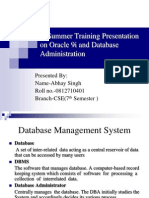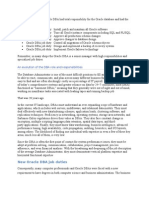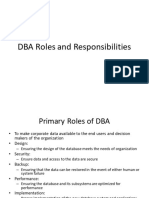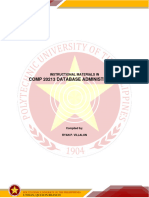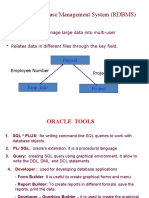0% found this document useful (0 votes)
8 views2 pagesU 3 Oracle
A Database Administrator (DBA) is responsible for managing and maintaining a database system, ensuring its security, performance, and availability. Key tasks include installing software, managing user access, performing backups, troubleshooting issues, and applying updates. In Oracle, a user is an account that connects to the database with specific permissions, and DBAs manage user creation, privileges, and access control.
Uploaded by
sanketb6543Copyright
© © All Rights Reserved
We take content rights seriously. If you suspect this is your content, claim it here.
Available Formats
Download as TXT, PDF, TXT or read online on Scribd
0% found this document useful (0 votes)
8 views2 pagesU 3 Oracle
A Database Administrator (DBA) is responsible for managing and maintaining a database system, ensuring its security, performance, and availability. Key tasks include installing software, managing user access, performing backups, troubleshooting issues, and applying updates. In Oracle, a user is an account that connects to the database with specific permissions, and DBAs manage user creation, privileges, and access control.
Uploaded by
sanketb6543Copyright
© © All Rights Reserved
We take content rights seriously. If you suspect this is your content, claim it here.
Available Formats
Download as TXT, PDF, TXT or read online on Scribd
/ 2
















